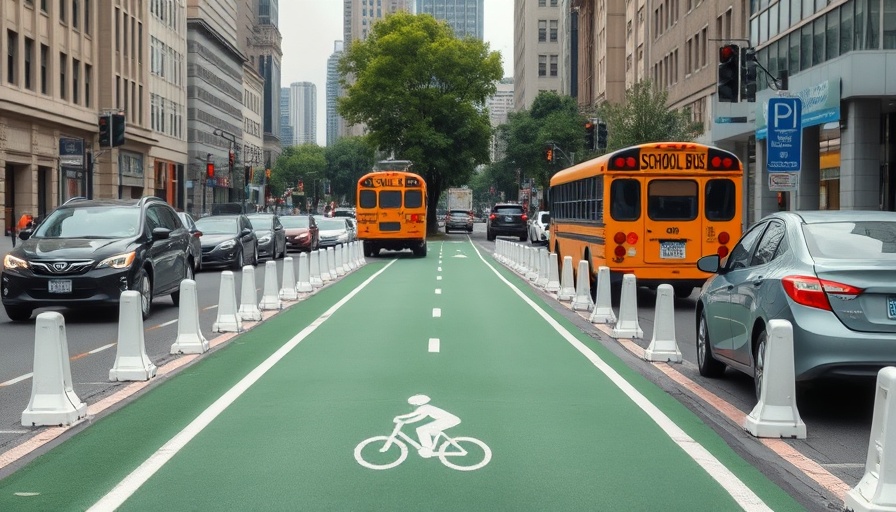
New Bike Lanes Bring Hope Amid Challenges
As New York City continues its push to enhance biking infrastructure, the recent debut of new bike lanes in the Village and Midtown has been met with enthusiasm from riders. However, the excitement is tempered by ongoing safety concerns, as an alarming number of cyclists are reportedly ignoring vital traffic rules, including running red lights. This behavior poses risks not only to themselves but also to pedestrians and motorists, heightening calls for better enforcement and infrastructure improvements.
Why Better Infrastructure Matters
The call for safe and extensive bike lanes is echoed throughout the city as advocates push for improved conditions for cyclists. The need for effective bike infrastructure is underscored by the sobering statistics reported by organizations like Transportation Alternatives and Families for Safe Streets, highlighting the alarming rise in traffic fatalities, particularly for cyclists. With 25 bike riders killed in the first nine months of this year alone, it’s clear that without adequate protections in place, the streets remain dangerous for commuters on two wheels.
Future Predictions: A City at a Crossroads
Looking ahead, there is a pressing need for New York City to follow the examples set by international cities that have benefitted from innovative biking infrastructure. Cities like Paris have successfully halved accident rates by investing in their cycling networks. Experts argue that New York must prioritize the completion of the NYC Streets Plan, mandated in 2019, which calls for 250 miles of protected bike lanes. Currently, only a fraction of this goal has been realized, leading to frustrations among advocates and riders alike.
The Economic and Health Benefits of Biking
Improving cycling infrastructure does not only enhance safety; it has broad implications for urban health and the economy as well. Studies indicate that cities investing in bike lanes experience lower traffic congestion, reduced pollution levels, and improved public health outcomes. Riders report increased happiness and wellness associated with cycling, suggesting that a shift towards biking could yield significant returns for New York City.
Action Needed: Voices for Change
Inaction on these pressing issues is no longer acceptable. Advocacy groups are rallying for city leaders to speed up the construction of bike lanes and related safety measures. They argue that real change must come from the administration of Mayor Eric Adams, as his promises to enhance the city’s biking network are yet to translate into tangible results. Voices from the community call for accountability and action to ensure that the lives of cyclists are protected.
Conclusion: The Path Forward
As New York City navigates these complex challenges, the future of biking in the city hangs in the balance. While new bike lanes inspire hope, real change will hinge on the community's push for robust infrastructure, adherence to traffic rules, and decisive action from leadership. For those invested in making the city safer and more accessible for cyclists, it’s crucial to advocate for the completion of safety projects and actively engage in promoting responsible biking practices.
Join the movement for safer streets! Advocate for better biking infrastructure in your neighborhood and promote safe riding habits among fellow cyclists. Together, we can transform New York City into a biking-friendly metropolis.
 Add Row
Add Row  Add
Add 




Write A Comment